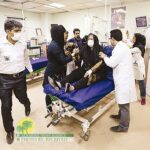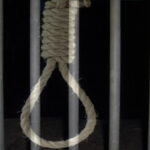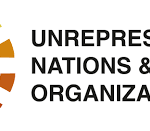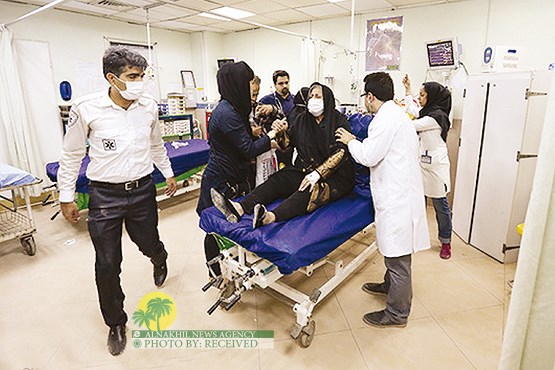Despite the facts that the province has the most fertile lands, the province suffers lack of local investments which
results in high rates of unemployment among Ahwazi Arab farmers. It is believed that the racial persecution and
Ahwazi Human Rights Organisation in UK
Introduction
Alahwaz is an Arab province in South West of Iran, strategically important area in the Middle East with 90% of the Iranian oil reserve. While indigenous Ahwazi Arabs suffer poverty, lack of basic medical services and high rates of unemployment.
The Iranian regime changed the original Arabic names of cities and areas of Alahwaz to Persian names though ethnic cleansing and Persianilisation during the last eight decades. The Iranian regime tries to eradicate and change the Arab identity of the area; where indigenous Arab people who lived in their area for thousands years.
The Ahwazi Arabs face persecution and systematic forced migration and political repression as result of economic crisis in the area in order to overcome threats to Iranian national security.
Education
A report published by the UN in December 2012 on human rights accusation in Iran. In the section related to Ahwazi Community, it states the high rates of school leaving among Ahwazi Arab students due to no education in their mother tongue. It also stated that the rates of school leaving among Ahwazi Arab students in primary 30% to 50% in Middle School and 80% in high school. Additionally, there is no media, articles and other materials in their language (Arabic).
The Iranian regime forcibly makes demographic changes in the area and changes the Arabic identity. During the last 8 decades, the Iranian government has been depriving indigenous Arabs from studying in their mother tongue and forbidding cultural events and other civilized activities in the area of Alahwaz.
Unemployment
According to a detailed report published by the Middle East Association, the rate of unemployment in Iran is 12% while the real figure is more than that. During the last few months, the rate of unemployment rose from 16% to 18% in Alahwaz, the most rich oil province in Iran, and the more than 50% of Ahwazi Arab women and young man do not have job and the same rate in suburban areas of Ahwaz reaches 20%.
Despite the facts that the province has the most fertile lands, the province suffers lack of local investments which results in high rates of unemployment among Ahwazi Arab farmers. It is believed that the racial persecution and discrimination are the main reasons for high unemployment rate among Arab labour. A self-explanatory fact shows the rate of unemployment in Dezful(with majority Persians) is 7% while in Mohammareh (Khuramshahr) and Abbadan (Abadan) cities of Alahwaz with majority Arabs, 31-50%.
Drug addiction
The Iranian regime uses drugs as one of many ways to humiliate the Ahwazi Arabs. The Iranian Government distributes drugs among Ahwazi Arab youth via their agents who work in demand of the Intelligent Services (Ettelaat). Therefore, the young Ahwazi Arabs cannot claim for their rights and be active in the area. According to official statistics in the province by the centre for fighting the drug addiction, it has been revealed that the drug addiction was the main reason for crimes high rate such as homicide and thefts with in the country. The “combat drug addiction centre” also showed that death due to drug addiction among Ahwazi Arab youth reaches 44% during the first 6 months in 2003 and in the second 6 months of the same year the toll death reached 1834 among Ahwazi Arab youths.
Environmental Crisis
The latest Al-Ahwaz Environment Report, published by the Ahwazi Arab Solidarity Network (AASN), reveals the scale of the ecological disaster in the Arab-majority Al-Ahwaz region.
Indigenous Ahwazi Arabs are being adversely affected by the environmental consequences of the Iranian government’s controversial river diversion program, intensive sugar cane farming and industrial pollution. They are all the products of the government’s misguided economic development policies. Droughts that were once easily overcome are now exacerbated man made water shortage.
The report accuses Iranian industry of persisting in its reckless pursuit of growth, regardless of the human effects. Asthma rates have soared by in the region over the past decade and Ahwaz City is recognised by the World Health Organisation (WHO) as having the world’s worst air pollution.
Executions and Detainees
In June 2012, the Iranian regime executed 4 Ahwazi Arabs, 3 of them were brothers, because of their political /cultural activities and claiming their rights in the area of Ahwaz. And the EP condemned the executions and called the Iranian regime to stop further arrests and executions among Ahwazi Arab minority. Following “Cairo Conference” in January 2013 in solidarity with Ahwazi Arabs, the Iranian regime detained more than 30 people in Ahwaz. In early February, 15 prisoners who were sentenced to death were transferred from Karoon prison to Gohardasht prison in north of Iran.
Recently another 5 Ahwazi Arab activists were sentenced to death and then the executions were proved by the Supreme Leader despite international condemnations by Amnesty International, Human Watches and other human rights organisations.
The Iranian regime executed an Ahwazi Arab on 14 February, four years after he was sentenced to death by a revolutionary court, according to local sources.
Amir Saedi, Director
Geneva Event, March 2013
http://www.ahwazhumanrights.org/
















+ There are no comments
Add yours